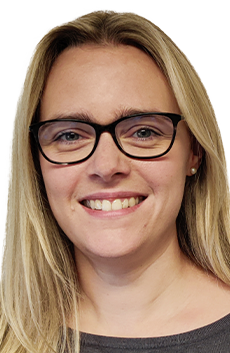Consolidation, whether through a full insurance buy-out, a scheme merger or move to a superfund is a major part of the end-game strategy for many occupational pension schemes. Just as there is now a menu of consolidation options for pension trustees and sponsoring employers to consider, there also isn’t just one journey towards consolidation. The paths, routes and timetables will vary considerably.
For most pension schemes, consolidation isn’t quick - even for those getting close to their end game, it could be five years or more off. For those earlier in the journey there’s time to explore all the options to ensure the right decisions are made for members. The reality is pension scheme consolidation is not just the end-game solution, it’s an evolution with many different forms and stages.
The current landscape
Momentum for consolidation has been building in recent times, with consolidation being encouraged The Pension Regulator (TPR), increased buy in and buy out activity and the health of UK defined benefit (DB) pension schemes improving.
There are new market entrants offering fresh options. Clara, the first superfund approved by TPR, is clearing the way for scheme transfers and new specialist consolidators for smaller DB schemes like Stoneport have also emerged providing new solutions.
The government is easing the way for consolidation too, particularly for defined contribution (DC) pension schemes. A new self-certification regime for DB master trusts was introduced by the Pensions and Lifetime Savings Association (PLSA) to improve the understanding of master trusts by standardising and clarifying information for pension trustees.
But these are all thoughts for the end of the consolidation journey. What happens at the start?
The real journey
Pension scheme consolidation actually starts much earlier than most pension trustees and scheme sponsors realise. It reflects the key areas trustees consider regularly in their pension scheme:
Getting governance right is paramount and, with increasing regulation, pension scheme trustees and their sponsors need to have professional support to manage these governance pressures and responsibilities and navigate key decisions. No wonder consolidating rather than governing has become more appealing!
There are many options for the structure of pension scheme governance. A first step away from the traditional employer and member nominated trustee board is appointing a professional independent trustee to work alongside the existing trustees. For companies with multiple pensions schemes, moving to a common trustee board across all the schemes is a valuable step on the consolidation journey, delivering value by saving both time and money.
A further step along the spectrum is appointing a professional sole corporate trustee to step in and manage the scheme, streamline governance and speed up decision making. According to the Association of Consulting Actuaries (ACA), as the industry is "creaking" under the weight of an increasing regulatory burden, almost a fifth of employers are considering sole trusteeship to simplify pension governance.
When it comes to consolidating operational aspects, there are many options to explore. An early stage could be aligning pension advisers across all your schemes or looking to bundle services such as actuarial, administration and investment consulting, with one firm. Similarly, using common investment managers can deliver asset efficiency, moving to a fiduciary manager could deliver on both operational and asset efficiency, or novel solutions like Pension Safeguard Solution can be considered.
Pension schemes have been considering structural efficiencies for years though DB scheme liability management exercises such as pension increase exchange (PIE) and enhanced transfer value (ETV) exercises, sectionalised mergers or full mergers.
It is only after all these stages we get to the end game solutions – master trusts, superfunds, buy out, captives etc - that deliver in all four areas of efficiency.
What else is driving the journey?
As you move along the consolidation journey, the degree of externalisation increases and reliance on the scheme sponsor decreases as the level of future risk and burden sitting with the employer falls away. This makes the sponsor an important driver in the journey.
Other pressures include increased disclosure requirements and environmental, social and governance (ESG) considerations, more prescriptive value for money assessments and The Pension Regulator’s proposed new single code of practice, which is likely to include a requirement for pension trustees to audit their governance framework. The government are looking at how they can nudge DC schemes toward greater investment in illiquid assets and improve decision making at retirement, both of which will likely lead to more work for trustees. And we mustn’t forget the requirement for pension trustees to link their scheme to the pensions dashboard and ensure ongoing compliance.
With so much change and no end in sight it’s no surprise trustees and sponsoring employers are looking at the range of options they have going forward. Can you see clearly what your pension scheme’s journey looks like?
‘ PSGS & 20-20 Trustees merge to form Vidett ’

Punter Southall Governance Services (PSGS) & 20-20 Trustees (20-20) have today announced they...
‘ Don’t be surprised that your gilt funds are being treated like an emerging market ’

You may have seen or heard about the article in the Financial Times about how Insight...